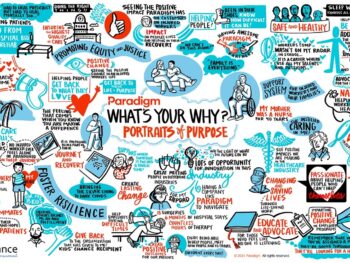Telehealth and telepresence are changing the way members of the claims management team, and other interested stakeholders are reducing workers’ compensation program costs. By using this advancing technology, parties looking for better ways to provide effective healthcare can manage their bottom line and provide better outcomes for injured workers. Telehealth is not a magic bullet solution; however, it can be an effective tool when used in accordance with workers’ comp management best practices and evidence-based medicine.
What are Telehealth and Telepresence?
Believe it or not, but the concept of “telehealth” is not new. It has been around in some manner for over 40 years. Recent enhancements in technology have only changed how it is viewed in the delivery of scarce healthcare resources.
- Telehealth: Refers to the distribution of health care services and counseling via telecommunication technology that includes the use of telephone, computer or other transmission services. In the context of health delivery, it often refers to the long-distance patient/clinician care and counseling that includes reminders, education, intervention, monitoring and remote admissions.
- Telepresence: Refers to the use of technology that allows a person to feel as if they are present via telerobotics, which includes the live interaction between persons in different locations. It adds the sense of two or more parties to feel as if they are in the same location.
A Case Study: Effective Use of Telehealth in Work Comp
There are many complaints about the delivery of healthcare and access to quality medical care and treatment following a work injury. This includes traveling to appointments, waiting to be seen by a doctor and other prolonged delays. It can also mean not having access to specialists who treat a variety of injuries, which may otherwise require long-distance travel and other miscellaneous expenses.
On average, an employee seen by a medical professional can spend over two hours of their time for each office visit. Multiply this by many encounters and one spends countless hours just traveling to and waiting to be seen by a doctor.
- Lack of access to general practitioners and other healthcare The average employee spends about 90 minutes completing paperwork in the office, waiting and actually being seen by a healthcare provider;
- Time wasted traveling to/from appointments and in the waiting room. The average employee spends about 40 minutes traveling for each appointment; and
- Delays in receiving medical care and treatment from a specialist. These delays are hard to estimate, but it can be substantial. Everyone can be frustrated.
Imagine the following scenario: The employee sustains a work-related injury in a rural area. Given the nature of their condition, they need to be seen by a specialist practicing in a far away metropolitan area. While the employee will need to be seen in person initially by this physician, the cost of follow-up appointments can be time-consuming and costly. On average, this could cost over $300 for the office visit alone. Workers’ compensation programs may also be required to reimburse the employee for food, lodging, and medical mileage.
By using telehealth and telepresence technology, the employee can have a conversation with this far away health care provider from the comfort of their own home. Instead of spending time traveling to appointments and waiting in an uncomfortable waiting room, that time can better be spent focusing on one’s recovery. The 1.1 billion hours wasted traveling to and waiting for appointments can be reduced to an average visit time of 15 minutes, and a fee of about $105 – nearly a 64% savings to the workers’ compensation program.
The net results are significant:
- Less travel and waiting times = less frustration
- Reduces costs to a program = greater savings
Advances in technology and cybersecurity are also making the use of this innovative way to treat employees suffering from a workers’ compensation claim safely and securely. This includes the protection of someone’s Protected Health Information. (PHI).
Conclusions
Interested stakeholders seeking to reduce workers’ compensation costs should become familiar with the benefits of telehealth and telepresence technology. When used in accordance with worker’ comp management best practices and evidence-based medicine it reduces costs to programs and the time employees spend waiting to see a health care provider. It also can allow for injured workers to receive care with a variety of experts in far away locations in an effective manner.

Contact: mstack@reduceyourworkerscomp.com.
Workers’ Comp Roundup Blog: https://blog.reduceyourworkerscomp.com/
©2018 Amaxx LLC. All rights reserved under International Copyright Law.
Do not use this information without independent verification. All state laws vary. You should consult with your insurance broker, attorney, or qualified professional.












